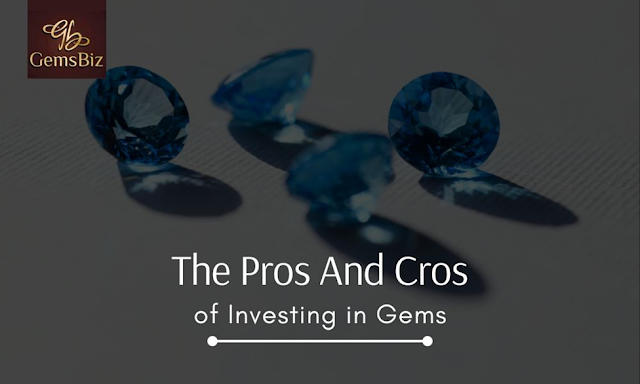The Pros and Cons of Investing in Gems
There are few tangible assets that have managed to maintain their value over time, but gems are one of them. Natural wholesale gemstones are beautiful and can be worn or displayed in your home, even while they accrue value in the background – and sometimes, they can even go up in value more than other investments like stocks or real estate. However, there are some major drawbacks when it comes to investing in gems, making it an attractive option only for certain investors. In this article, we’ll explore the pros and cons of investing in gems so you can decide if it’s right for you!
Introduction
Gems are one of the most valuable assets in the world. They
have been used for centuries by royalty and the rich to show off their wealth.
These days, however, it’s not just about being flashy- there are more reasons
to invest in gems than ever before. They can be a great way to diversify your
portfolio, as well as a hedge against inflation. On the other hand, they may
also expose you to significant risk if they go up in price while you own them.
Some people also feel that they’re too volatile or out of reach financially.
Read on to find out what investing in gems means and whether or not it might
work for you!
Why invest
in gems?
Investing in gems can be a very good way to diversify your
portfolio. It is also an interesting hobby that may lead to additional
opportunities for income. However, there are some drawbacks to investing in
gems as well, so it is important to explore the pros and cons before deciding
if this is a worthwhile investment for you. First, while they tend to be
low-risk investments due to their stability over time, they have a high
correlation with equities markets. Second, unlike many other investments which
hold their value fairly well over time (and even increase), loose gemstones tend to fluctuate
greatly in value from year to year and even day-to-day based on factors such as
economic conditions or changes in supply/demand.
Risks
Investing in gems can be risky. When you invest, you take a
gamble on the value of the gemstone increasing or decreasing. The same is true
for investing in stocks and bonds. However, there are some factors that could
make it less risky:
- If there's only one diamond, this makes it more likely
that the diamond will appreciate over time than if there were multiple natural diamond stones to choose from.
- If the stone has been certified by an independent third party, then it also
makes it less risky because the certificate provides assurance of its quality.
- Diamonds have been known to go up in value even when the
economy takes a downturn because they're seen as a hedge against inflation.
- Diamonds are portable so they can be taken with you
wherever you go!
Different
types of gem investments
There are many different types of gem investments, but there
is not a one size fits all solution. What works for one person may not work for
another. When choosing the right investment plan, it's important to consider
your time frame, income needs, risk tolerance, personal tastes, and financial
goals. The best way to get started with investing in gems is to find an advisor
who can walk you through the process.
Income-seekers: It’s important to understand what type of
investment you want when deciding on a particular gem. If you want short-term
or quick returns, then investing in gems might not be the best choice for you
as they don’t always yield high yields within shorter periods of time.
How are
they valued?
Gems are valued based on a number of factors, including
rarity, color, and clarity, cut, and carat size. The rarer they are, the more
they cost. Clarity is also a factor: some gems are eye-visible while others are
not. Diamonds are the most well-known gemstone with prices ranging from $500 to
$4 million for a single diamond. Rubies can range from $10-$50 thousand
depending on the quality. Natural sapphire gems are also valuable, starting at $10-$20 thousand. However, there's no
guarantee that you'll find any of these stones while panning through the
riverbed!
Where
should you buy it?
Buying gems can be a great way to diversify your portfolio.
But before you buy, you should consider the pros and cons of investing in gems.
- The best places to buy gemstones are from online gem retailers with a good reputation. If
you're buying from a brick-and-mortar store, they should also be well known. Weather
you buy gemstone beads, cabochons, or gemstone carvings always check reviews first.
- You should always buy loose stones, not mounted gems.
Mounted gems may seem like a bargain, but mounting is labor-intensive and very
expensive. In fact, most jewelers would charge at least $500 to mount a stone
that costs less than $1,000. - Larger stones are more expensive per carat than
smaller ones because they have a higher value per carat. - Some people advise
avoiding colored gemstones because they come in limited colors while diamond
colors come in limitless varieties.
Conclusion
Investing in gems can be an excellent way to diversify your
portfolio, as well as help you reach your financial goals. But with any
investment, there are always pros and cons.




Comments
Post a Comment